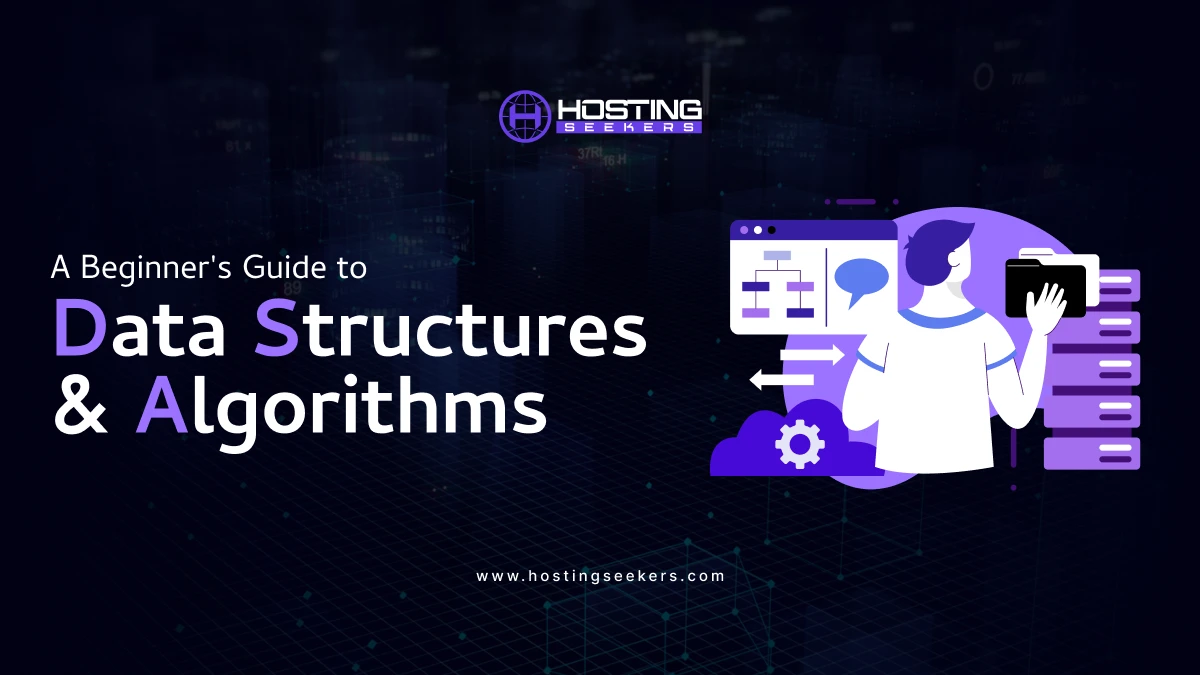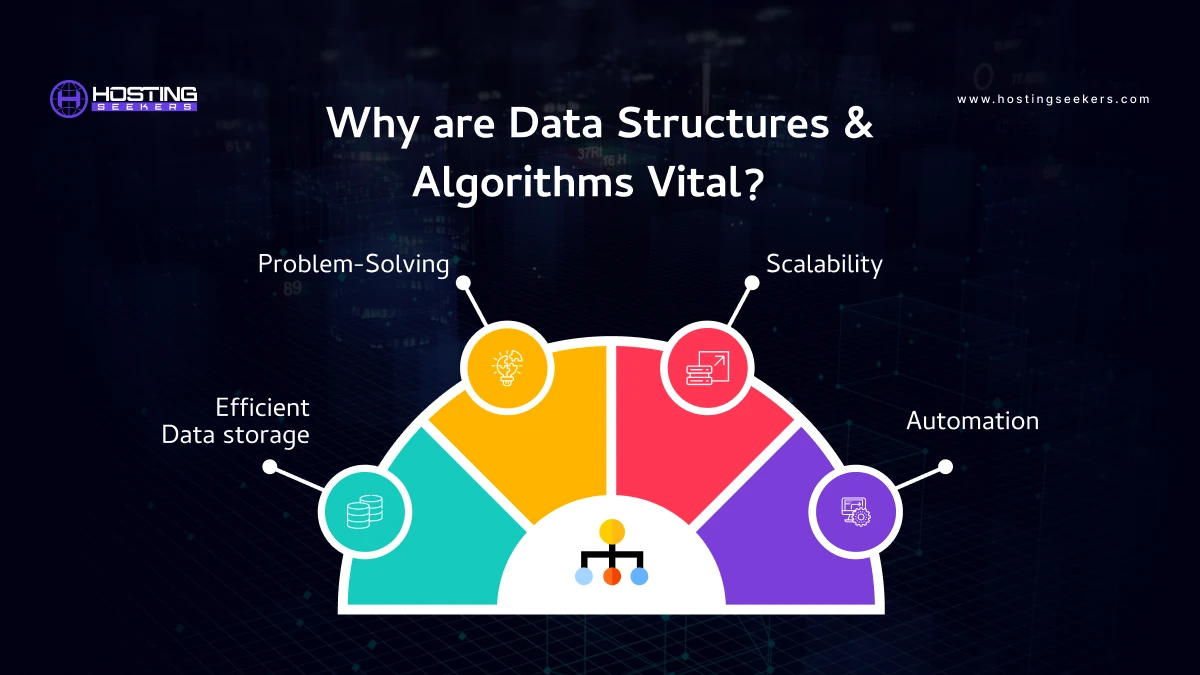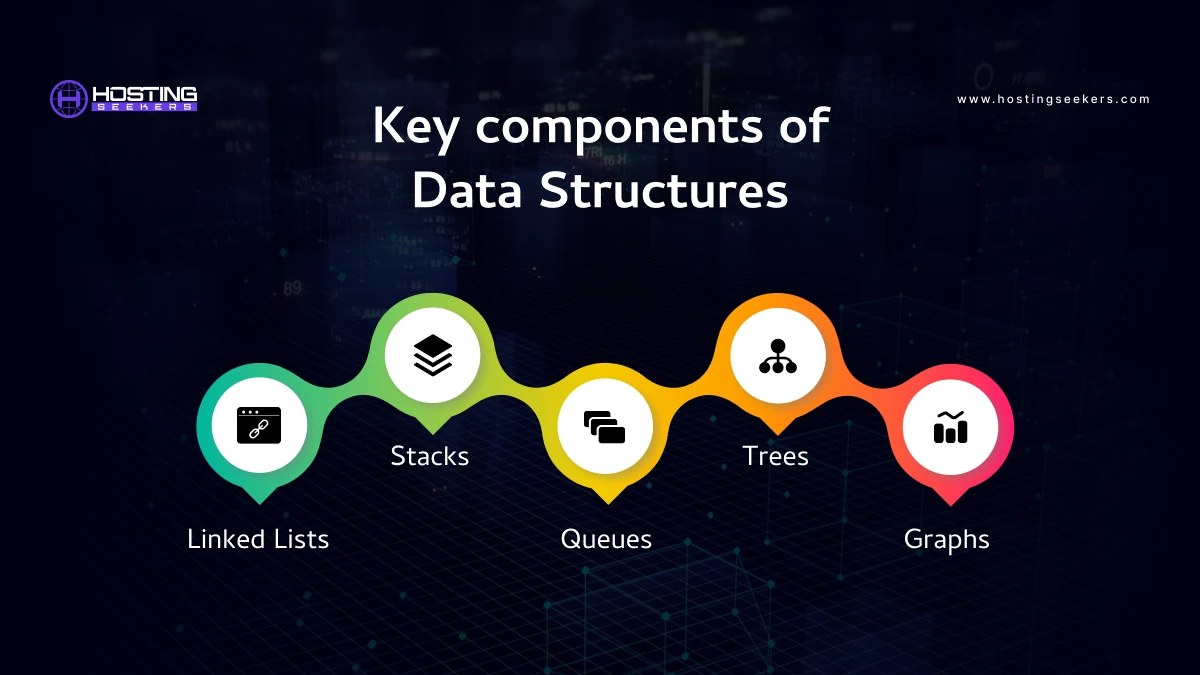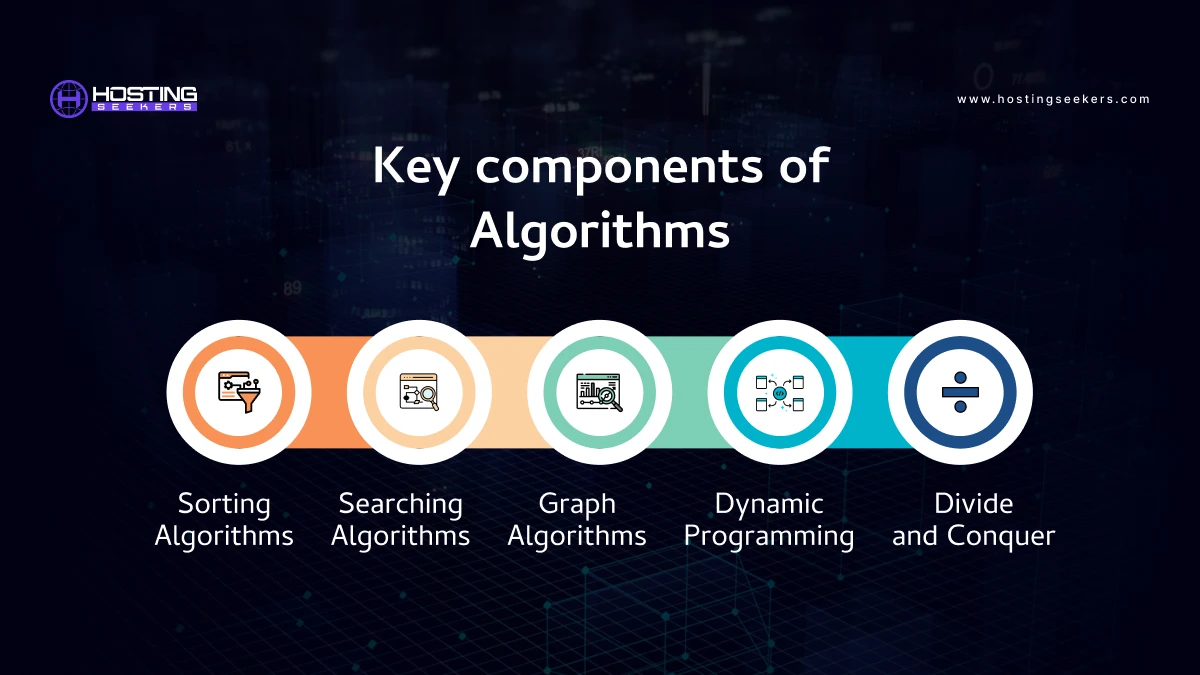
A Beginner’s Guide to Data Structures and Algorithms
IT Updated on : March 4, 2025Algorithms and Data structures are the most vital concept. They refer to the manipulation and organization of data in a way which is both effective and efficient. Therefore, knowing and learning about algorithms and data structure enables you to solve complex problems, write better code, and understand the inner workings of computer programs.
This guide will help to explore more about Data structures and Algorithms. Let’s get started.
What is Data Structure and Algorithm (DSA)?
Data structure and algorithms are a vital part of computer science. Let’s understand in simple words.
Data Structure
A data structure is a way to manage, handle and organize data in a form that is seamless and accessible to computers. It enables the processing of large amounts of data in a relatively short period of time.
Algorithms
Algorithms are defined instruction sets that are designed and utilized to solve problems or perform a task. To explain in simpler terms, it is a set of operations performed in a step-by-step guide for task execution.
Why are Data Structures and Algorithms Vital?

Algorithms and Data structures are vital in computer science as they allow computers to analyze and process large amounts of data effectively. They are utilized in a wide range of apps, from simple calculators to difficult artificial intelligence systems.
Here are some reasons why data structures and algorithms are vital:
1. Efficient Data storage
Data structures offer a way to store and retrieve data effectively which is vital in applications that need immediate data access like file systems and databases.
2. Problem-Solving
Algorithms provide to solve complex issues like sorting, searching, and optimization which are important for most apps like web search, recommendation systems and machine learning.
3. Scalability
Data structures and Algorithms enable computers to scale to more amounts of data which is important for big data analytics, data mining, and data science.
4. Automation
Algorithms automate tasks, make it more possible to perform repetitive tasks more quickly and importantly which helps in apps like AI, automation, and robotics.
Relating Data Structures and Algorithms
Understanding the collaboration between data structures and algorithms is key to designing efficient and robust software solutions, let’s understand the relation of Data structure and Algorithms.
1. Reciprocal Impact
The interplay between algorithm and data structure is very difficult and also vital, as the choice among one of them can significantly impact performance.
2. Enhancing Efficiency
The strategic selection of data structures can appropriately improve algorithm efficiency. Therefore, using a hash table, for example, can accelerate search processes and maximize the algorithms search speed.
3. Essential for Problem-Solving
Proficiency in both data structures and algorithm are vital for solving complex problems in computer science, as they offer the foundation for creating efficient and effective solutions.
4. Optimization of Algorithms
The relation of data structures and algorithms enables the algorithms optimization through the clear and precise selection of the most suitable data structures, enhancing performance and conserving resources.
5. Synergistic Role
Data structures are the backbone for organizing and storing data, while algorithms are the strategies utilized for processing this data efficiently and effectively.
Key Components of Data Structures

Let’s understand the key components of Data structures that are frequently utilized in different algorithmic and programming task;
1. Linked Lists
It is a vital data structure that manages and organized information into individual elements stated as nodes. Each node contains data and a pointer that links to the next node, creating and developing a chain.
Also, different form arrays, linked lists don’t need consecutive memory space, providing greater flexibility in allocation of memory.
2. Stacks
A stack is a structured data model that sticks to a particular sequence for implementing operations.
This sequence is mostly characterized as LIFO which is stated as “Last in, first out which means most recent added element is the first to be eliminated. In addition, it can be described as FILO i.e. first in, last out, where the initial element added is the last to be retrieved.
Also, LIFO denotes that the last element to enter is the first to exit, while FILO indicates the first element to enter is the last to exit.
3. Queues
A queue is a linear data structure that operates on the First-In-First-Out (FIFO) principle. This means that the first element added to the queue is the first one to be removed. Queues are widely used for tasks such as resource management, scheduling, and simulating real-world scenarios where items or entities are processed in the order they arrive.
4. Trees
Trees are mentioned as hierarchical data structures with root and child nodes. They have apps for managing and organizing data hierarchically and are utilized for tasks like searching and hierarchical data representation. Most of the common tree types include binary search trees, binary trees, and Adelson-velsky and Landis (AVL) trees.
5. Graphs
Graphs are vital and versatile data structures utilized to model relationships between entities. They include nodes (vertices) and edges (connections), making them more comfortable for apps like route finding, social networks, and network modelling. Graphics come in different forms including directed and undirected graphs.
Key Components of Algorithms

Algorithms are the engines that drive the processing and manipulation of data in these Data structures.
1. Sorting Algorithms
Sorting Algorithms align elements in a particular order, be it ascending or descending. Common sorting Algorithms incorporate Merge sort, Bubble sort, and more.
2. Searching Algorithms
Searching Algorithms are utilized to find a particular element in a dataset. Binary search and linear search are widely utilized search techniques.
3. Graph Algorithms
Graph Algorithms is also known as Dijkstra’s Algorithms and bread-first search, and are utilized to solve problems based on routing, networks, and traversal.
4. Dynamic Programming
Dynamic programing is the strategy which is used to solve complex problems by breaking them into smaller overlapping subproblems. It’s commonly utilized for optimization problems like Knapsack problem or Fibonacci sequence.
5. Divide and Conquer
The divide-and-conquer approach technique includes diving an issue into minimal subproblems and solving them independently. Also, algorithms like Fast Fourier transform and the merge step in merge sort follow this paradigm.
Real World Application of Algorithm and Data Structures
1. Web Development
In web development, data structures and algorithms significantly enhance performance and user experience through:
Database Query Optimization: Efficient data retrieval is achieved using structures like B-Trees for indexing, which allows for rapid search, insertion, and deletion operations. Hash indexing further accelerates access to specific records.
Caching Mechanisms: Algorithms manage cache storage to reduce web server load and improve response times, thereby enhancing overall site performance.
Search Engine Optimization (SEO): Algorithms help rank web pages based on relevance, utilizing data structures to organize and retrieve vast amounts of information quickly.
2. Database Systems
Data structures are integral to managing and optimizing databases:
B-Trees: These are employed for indexing in relational databases, facilitating efficient data access patterns.
Hash Tables: Used for fast retrieval of records, hash tables allow for quick lookups by mapping keys to values.
Indexing Techniques: Various algorithms optimize data storage and retrieval processes, improving query performance significantly.
3. Artificial Intelligence and Machine Learning
In AI and machine learning, DSA is essential for:
Model Development: Data structures like decision trees are used to classify data and make predictions based on input features.
Data Manipulation: Algorithms process large datasets efficiently, enabling the training of complex models that can be learned from vast amounts of information.
Optimization Techniques: Algorithms such as gradient descent are used to refine model parameters during training.
Computer Networks: Data structures and algorithms are crucial in optimizing network operations:
Routing Protocols: Algorithms determine the most efficient paths for data transmission across networks, reducing latency and improving throughput.
Traffic Management: Structures like queues manage data packets effectively, ensuring smooth flow even during peak usage times.
Security Protocols: Data structures support encryption algorithms that secure data transmission over networks.
4. Geographic Information Systems (GIS)
GIS applications utilize DSA for:
Spatial Data Representation: Data structures like quadtrees store geographical information efficiently, allowing for quick access and manipulation of spatial data.
5. Computer Graphics
In computer graphics, DSA aids in rendering complex visual scenes:
3D Mesh Representation: Data structures store geometric models used in animations and simulations.
Rendering Techniques: Algorithms optimize the rendering process by managing how graphics are processed and displayed on screen.
Challenges and Complexities
While data structures and algorithms are the backbone of programming. There are chances of arising the complexities of real-world applications that come with their own set of difficulties. Let’s check out some vital considerations that developers face when facing these vital concepts.
1. Scalability to Maintain Performance
Scalability is the ability of a system to manage and handle maximized workload or data volume more gracefully as applications grow, their performance should not only be maintained but should improve.
How to overcome?
Selecting the algorithms with more time and space challenges is vital for scalability, Also, mostly scalability includes distributing workloads across multiple servers to manage and handle increased demand.
2. Time Complexity
Time complexity measures the computational time an algorithm takes, while space complexity analyzes the memory it consumes. Therefore, balancing both is vital for developing and creating efficient and responsive software.
How to overcome?
Analyzing space and time complexity using Big O notation is essential for evaluating the efficiency of algorithms. It provides a framework to understand how an algorithm’s performance scales with input size.
Optimizing for time efficiency can lead to increased space usage, and vice versa. For instance, a faster algorithm may require additional memory to store intermediate results, while a more memory-efficient algorithm might take longer to execute.
3. Selecting the Right Data Structure and Algorithms
The effectiveness of a program significantly relies on selecting the most appropriate data structure and algorithm for the specific problem at hand. An incorrect choice can lead to inefficiencies and performance bottlenecks, ultimately undermining the program’s success.
How to overcome?
Before selecting a data structure or algorithm, it is crucial to understand the problem’s constraints and requirements. Identify the specific operations needed and evaluate their expected time and space complexities.
Summing Up
Data structures and algorithms are the vital tools and backbone of the programming. It acts as an important component for effective data organization and problem-solving. They allow us to manage information effectively, speed up task execution and minimize errors in software development.
Frequently Asked Questions
Q 1. Why are Data Structures and Algorithms important?
Ans. Understanding data structures and algorithms is crucial for optimizing performance in programming. They help in organizing data efficiently, executing tasks faster, and reducing errors, which ultimately leads to more reliable software.
Q 2. What are the different types of Data Structures?
Ans. Data structures can be categorized into:
Linear Data Structures: Elements are arranged sequentially (e.g., Arrays, Linked Lists, Stacks, Queues).
Non-linear Data Structures: Elements are not arranged in a sequence (e.g., Trees, Graphs).
Q 3. How do Data Structures and Algorithms relate to each other?
Ans. While data structures serve as containers for storing information, algorithms provide methods for manipulating that information. Together, they enable efficient data processing.
Q 4. What are some common applications of Data Structures?
Ans. Data structures are utilized in various fields, including:
Search engines, Operating systems, Machine learning, Financial systems, Image processing.
Q 5. How can beginners start learning about Data Structures and Algorithms?
Ans. Beginners can start by:
Studying fundamental concepts through online resources or textbooks.
Practicing coding problems related to different data structures.
Engaging in projects that require implementing algorithms.




